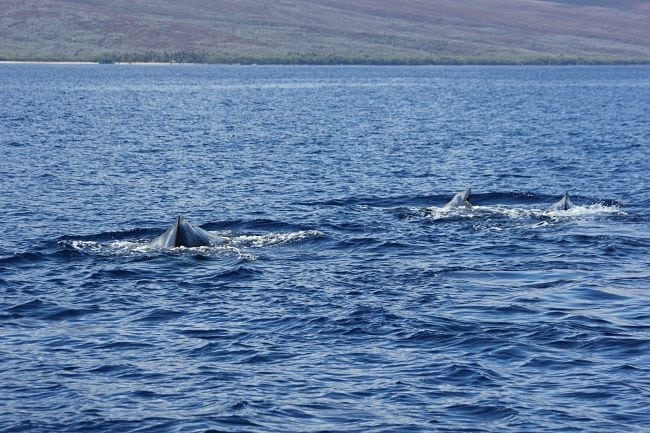10 Reasons We're Thankful to Live on Maui
This list could've run on for pages and pages. But on this extended holiday weekend, we'll settle for our top 10 reasons to be thankful for living on ...

Over the past few years, observers have witnessed a mysterious new behavior among humpback whales. Unlike many other cetaceans, humpbacks are known as solitary creatures who only tend to congregate temporarily during mating season, or to travel in pairs or small groups that break up after a short time. Now, there are a growing number of documented sightings of massive groups of humpbacks, containing as many as 200 individuals.
Some scientists think that the incredible recovery of the humpback whale population could be one of the explanations for this remarkable change. Historically, whaling activity reduced the number of humpback whales to an estimated ten percent of their original population. This led many countries to make whaling illegal. Today, the Hawaiian Islands Humpback Whale National Marine Sanctuary is just one of their safe havens, and a vital one, as marine scientists believe that more of the North Pacific stock come to Hawaii than the other two known breeding areas, which are western Mexico and the islands of southern Japan. If you join us aboard a Maui whale watch cruise, you'll get to witness the robust population of whales that come to Hawaii firsthand.
The super-groups of humpback whales have been sighted by cruise ships in 2011, 2014, and 2015. There have also been a growing collection of sightings via aircraft and miscellaneous public observations. The collection of breathtaking pictures is expanding along with the sightings.
So, what were the whales doing in these super-groups? They were feeding, generally around the south-western coast of South Africa. Although there is one record of humpbacks feeding around this location about a hundred years ago, this spot is many thousands of miles away from the areas that have become their typical feeding grounds, in the waters of the Antarctic. Some researchers are considering whether part of this behavior is changing based on the available prey. That may explain the unusual location, but would it explain the size of the group?
The truth is, whale behavior was poorly documented back before the whaling began. For all we know, cooperative feeding at such an enormous scale could have been normal when the population was at its natural size. Humpbacks have often been documented feeding cooperatively in small groups, so perhaps the resurgence of their numbers has led to the re-emergence of an old behavioral pattern.
Right now, no one knows for certain what's causing this dramatic change in their behavior, but as their numbers continue to recover, marine researchers expect to observe many other fascinating changes. One thing we can be certain of, however, is that global conservation efforts on behalf of the humpback whale has proved one of the greatest success stories in the history of environmental efforts. Now, we can enjoy the wondrous results on our Maui whale watch excursions. We hope you'll join us soon, before the whales return to their feeding grounds in the summer and fall months. Mahalo!
This list could've run on for pages and pages. But on this extended holiday weekend, we'll settle for our top 10 reasons to be thankful for living on ...
1.) At just over 140 square miles, Lana'i is the sixth largest island of the Hawaiian island chain. During the 2010 census, Lana'i's counted just 3,10...
Unlike the Caribbean, there hasn't been a long history of pirate activity in Hawaii. But there is one incident, one that many believe was the last lar...
